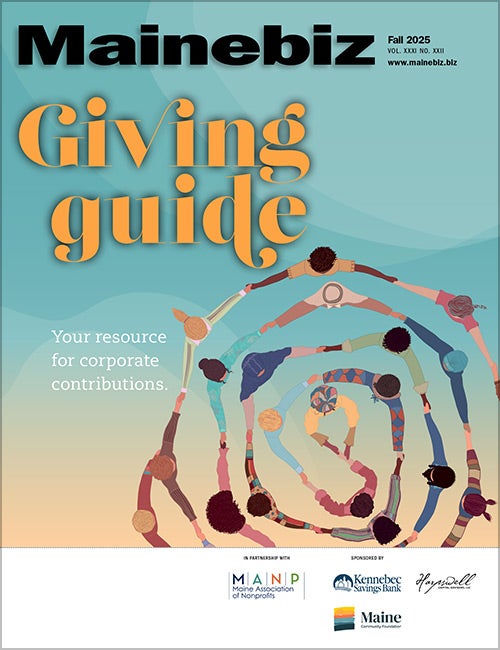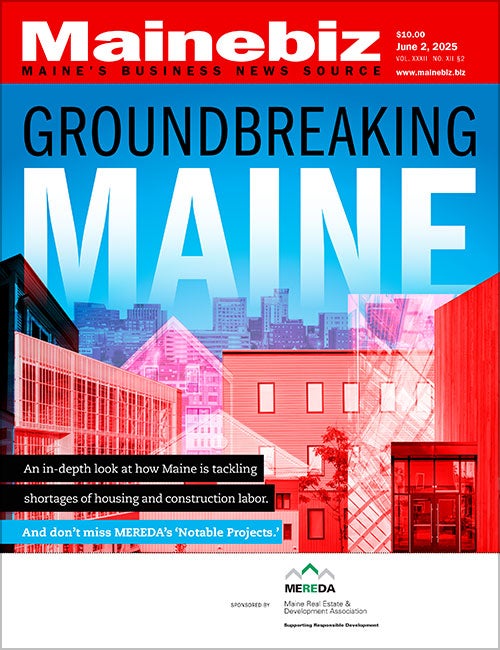A 1,300% increase in net income. What's the story?
 Photo/Brandon McKenney
Mike Dubyak, CEO of Wright Express Corp. in South Portland, says his company's financials offers a nice indicator of how the economy is faring
Photo/Brandon McKenney
Mike Dubyak, CEO of Wright Express Corp. in South Portland, says his company's financials offers a nice indicator of how the economy is faring
Wright Express Corp. in South Portland earlier this month reported some eye-popping financial results. The company, a provider of payment processing and information management services for commercial and government vehicle fleets, said its net income on a GAAP -- generally accepted accounting principles -- basis had increased 1,317%, from $4.6 million in the fourth quarter of 2007 to $65.2 million in the same quarter last year. Though, during the same period, the company's revenue decreased 11% to $80.9 million. How could this be? Mainebiz spoke with Mike Dubyak, CEO of Wright Express, to take us beyond the complicated financial statements and explain how the company fared in 2008 and what he expects in 2009.
Sitting in his office on a recent morning in a casual outfit of jeans and turtleneck, courtesy of a recent winter storm that knocked out power to many a Mainer's home, Dubyak is quick to admit that the GAAP numbers are misleading. The GAAP numbers are true, but they take into account $86 million in unrealized gains in 2008's fourth quarter from fuel price derivative instruments, which are an investment tool the company uses to hedge against the ups and downs of fuel prices. The company's unrealized gain on the instruments was only $23 million in the fourth quarter of 2007. Basically, Wright Express made some good bets on fuel prices. If the company's intention was speculative, it could cash in on those hedged bets, which it's made through the middle of 2010, and pocket that $86 million. "But we're not trying to be speculators, we're trying to take the volatility out of our business model," Dubyak says.
Six analysts follow the company, and Dubyak says they all ignore the GAAP figures, which the company is required by law to report. Instead, the figure that more accurately reflects the company's performance is the non-GAAP adjusted net income, which does not take into account the unrealized gains from fuel price derivatives instruments. For the fourth quarter of 2008, the company's adjusted net income was $12.5 million, a nearly 37% decrease from the $19.7 million for the fourth quarter of 2007.
So, when the unrealized gains from the fuel price derivative instruments are removed from the equation, it's clear that Wright Express is feeling the crunch as its customers cut back by removing drivers and vehicles from the road.
Wright Express has roughly 300,000 customers, from state and federal governments to large companies like AT&T and local companies like Hancock Lumber. Its customers operate 4.8 million vehicles. Essentially, what Wright Express offers is the ability for its customers to keep track of its drivers and where, when and how much fuel they purchase. The company's software is installed at 90% of the retail fuel locations across the country.
The company actually added 600,000 new vehicles in 2008, including roughly 278,000 from the federal government. But where Dubyak says the company took a hit was in the attrition rate of its existing customer base -- fueling volume of its existing customer base declined by about 4% for the year -- and higher-than-expected credit loss. Dubyak says he expects 2009 to remain a challenge as companies continue to try to cut costs by having fewer drivers and vehicles on the road.
When customers start adding vehicles to fleets and increasing fuel volume, Dubyak says it'll be a sign that the economy is improving. "We are a nice forecaster for the economy, with 300,000 customers from small to large companies. If we see our customers bottom out and begin to grow again that says the economy is getting better."










Comments